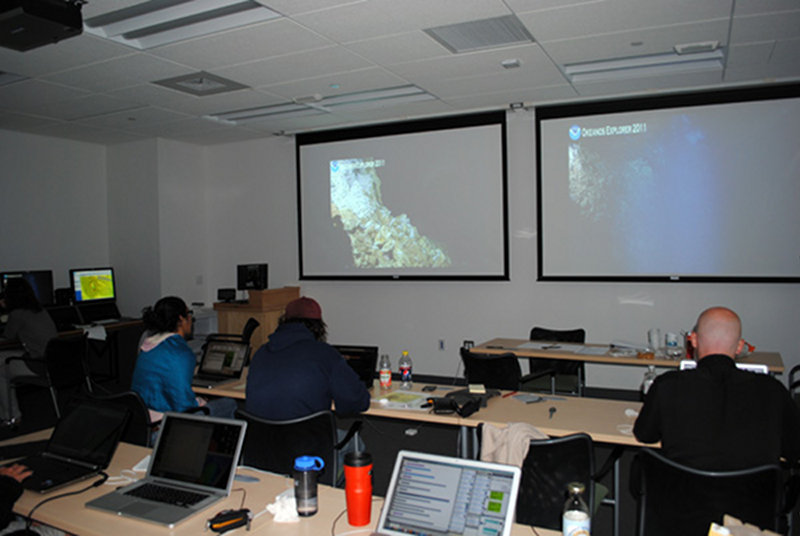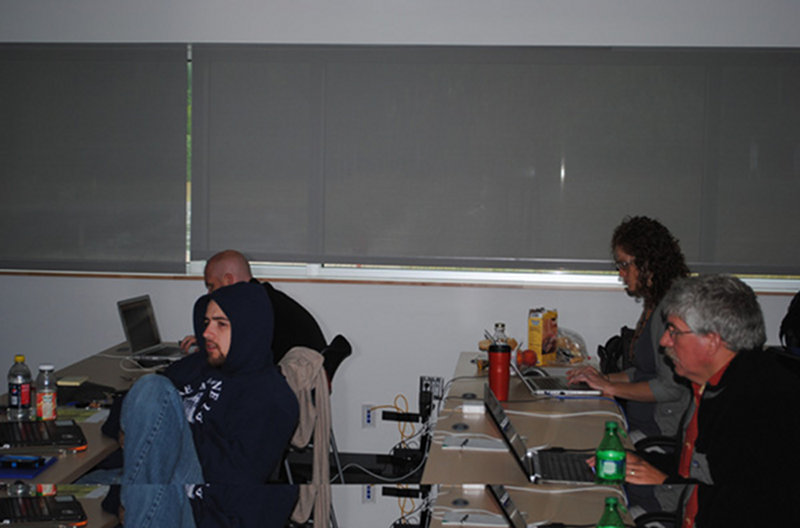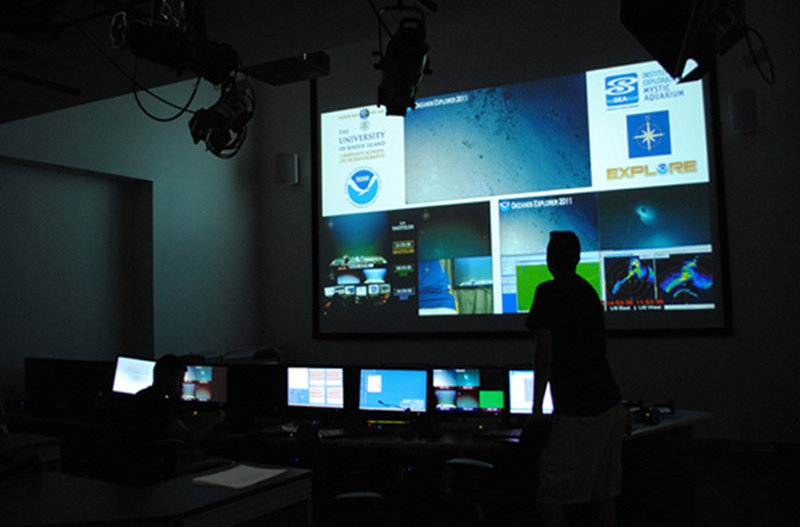
By Catalina Martinez, Rhode Island Regional Manager - NOAA Office of Ocean Exploration & Research
and Keeley Belva, Communication Coordinator - NOAA Office of Ocean Exploration & Research
August 7, 2011

Team Rhode Island in the Exploration Command Center watching video streaming from NOAA Ship Okeanos Explorer at the Mid-Cayman Rise. The console and intercom system is on the left of the image and scientists can also communicate with each other and the ship by instant messaging from computers. Image courtesy of NOAA Okeanos Explorer Program. Download larger version (jpg, 4.4 MB).
The Inner Space Center at University of Rhode Island, that is. For this expedition at the Mid-Cayman Rise, most of the science team is stationed here in Rhode Island for the first time. It’s a great place to be even though it’s raining and a little dreary today.
The room that we’re spending the most time in is more or less a classroom that is set up as an Exploration Command Center. There is a console with three video screens to view all of the video feeds streaming from the ship, and an Internet-enabled intercom system that allows us to communicate directly with ROV operators and scientists on NOAA Ship Okeanos Explorer and other Exploration Command Centers. Within the classroom itself, there are also two integrated projectors to display the live streams in larger-than-life fashion. But the coolest part is downstairs in the Inner Space Center itself where not only can you see all three video feeds from Okeanos Explorer, but simultaneously also view live streaming video from E/V Nautilus—the Ocean Exploration Trust’s ship that is conducting ROV operations and searching for ancient shipwrecks in the Black Sea, halfway around the world.

Having the majority of the science team based onshore allows many experts to participate without taking up valuable space on the ship. Jameson Clark (front left) is one of the shore-side biologists, Brendan Reser (behind Jameson) is an OER staff member helping to collect and store all of the data collected during the mission, Jill McDermott is working with the team using the gas chromatograph, and Mike Cheadle (front right) is one of the geologists. Image courtesy of NOAA Okeanos Explorer Program. Download larger version (jpg, 4.0 MB).

The Inner Space Center can project video from both NOAA Ship Okeanos Explorer and E/V Nautilus simultaneously while both ships are in different locations around the world. Image courtesy of NOAA Okeanos Explorer Program. Download larger version (jpg, 3.8 MB).
The vision of using satellites and high bandwidth Internet connections to bring data and images from the bottom of the ocean to shore in real time—a concept called telepresence—was conceived more than 25 years ago by Dr. Robert Ballard. The application of this incredible technology to operate between ships at sea and shore-based centers was developed over many years through partnerships between NOAA, the University of Rhode Island, and the Institute for Exploration. The Inner Space Center is the technical hub for all of the audio and video that you’re receiving from the ships. Which is helpful for us here if there are any problems!
This is also the first time that the team at the Inner Space Center has had to support both ships diving at the same time, so we’re keeping them busy! But if all continues to go well, you too can participate in the dives by: